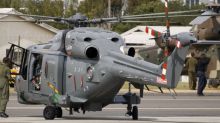BAE Systems plc (BA.L)
LSE - LSE Delayed price. Currency in GBp (0.01 GBP)
Add to watchlist
At close: 05:15PM BST
| Previous close | 1,364.00 |
| Open | 1,363.50 |
| Bid | 1,330.00 x 0 |
| Ask | 1,400.00 x 0 |
| Day's range | 1,350.00 - 1,365.50 |
| 52-week range | 883.40 - 1,406.50 |
| Volume | |
| Avg. volume | 6,837,275 |
| Market cap | 41.319B |
| Beta (5Y monthly) | 0.36 |
| PE ratio (TTM) | 22.69 |
| EPS (TTM) | N/A |
| Earnings date | N/A |
| Forward dividend & yield | 0.30 (2.20%) |
| Ex-dividend date | 18 Apr 2024 |
| 1y target est | N/A |
- PA Media: Money
BAE Systems eyes ‘positive momentum’ from UK defence spending commitment
It came as the boss of the London-listed arms firm said it has seen a ‘strong’ operational performance and is on track to meet its targets.
- Simply Wall St.
BAE Systems (LON:BA.) shareholders have earned a 28% CAGR over the last five years
The worst result, after buying shares in a company (assuming no leverage), would be if you lose all the money you put...
- The Telegraph
How Barclays became a lightning rod for Gaza activists
When Barclays executives descend on Glasgow next week for the bank’s annual shareholder meeting, expect to see tight security.


